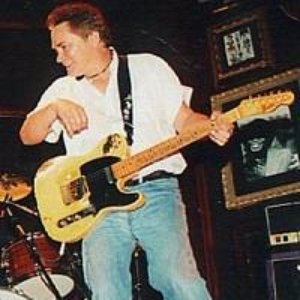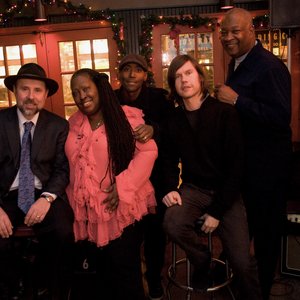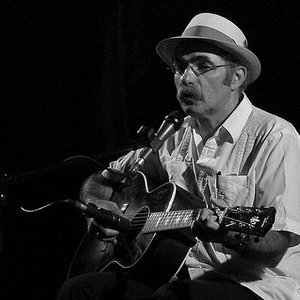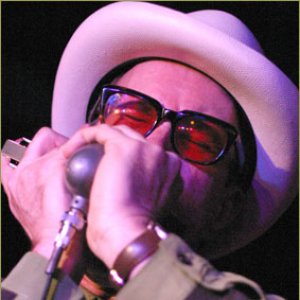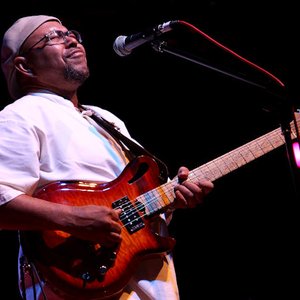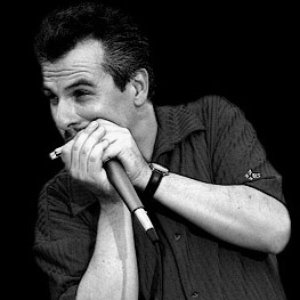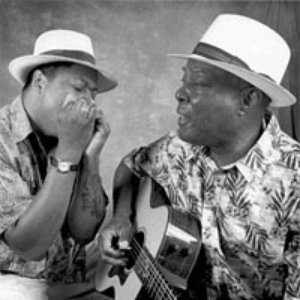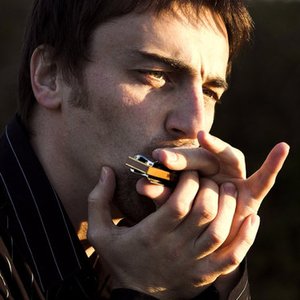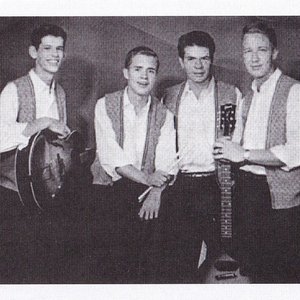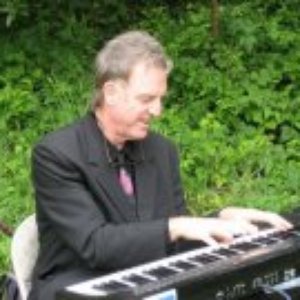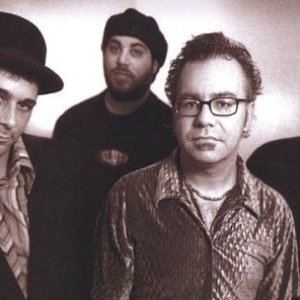Biography
MARK WENNER
Mark was born and raised in Maryland’s D.C. suburbs. At age ten, a budding rebel and biker-to-be, he was already listening to the amazing ferment of blues-based music that was coming out of the Washington-Southern Maryland music scene. In his words, “Most people don’t realize what a cultural crossroad Washington was back then. It was like Memphis with a mixture of music – doo-wop, country, rockabilly, and blues. I’d just as soon tune in George Jones as Joe Turner.”
The late fifties saw commercialism eclipsing Mark’s gritty rock and roll favorites: Jerry Lee Lewis, Carl Perkins, Chuck Berry, and Little Richard. That turned young Mark more and more towards R&B and the blues. By the beginning of high school, he was snatching up all the Ray Charles, James Brown, and Muddy Waters records he could lay his hands on – and tuning his radio mostly to the six or so black music stations in the area. And, of course, almost every Saturday afternoon, he’d sneak down to D.C.’s now-legendary Howard Theater to catch the “Chitlin’ Circuit” tours of national R&B, soul, and jazz groups. “We’d tell our parents we were going to the movies in Bethesda and then catch a bus at the District line… In practically no time and for a mere seventy-five cents we’d be enjoying the likes of Motown Revue, James Brown, and Billy Stewart (Marvin Gaye’s mentor),” recounts Mark.
By the end of tenth grade, Mark was already collecting hard core, then-obscure harmonica bluesmen like Slim Harpo, Lazy Lester, and Lightnin’ Slim. Mark recounts, “I found that type of raw, stark and simple blues was very compatible with the sparse playing of, say, a Jimmy Reed with whom I was already very conversant.” About this time, quite naturally, Mark began “noodling around” with the blues harmonica. Paul Butterfield’s 1965 recording of “Born in Chicago” really inspired him to get serious about the blues harp; then listening to Charlie Musselwhite expanded Mark’s style. In 1966, Mark entered New York’s Columbia University, falling directly into a college music scene where almost everybody played. Soon he was spending almost all his time practicing Butterfield licks, sitting in with groups like Sha Na Na, or hanging out in Greenwich Village, listening to visiting blues greats like Howlin’ Wolf, Muddy Waters, Junior Wells, and Buddy Guy. At Columbia, he formed his first band, B-Town Slim and His Rhythm Review, doing soul, R&B, and funky blues – with Mark, for the first time, singing lead. During summer breaks back home in D.C., Mark would play the local blues scene, often sitting in with Bobby Ratcliff, Washington’s blues icon back then.
Graduating from Columbia in 1972, Mark immediately headed for D.C. to start a blues band. Continuing to sit in with his old friend Bobby Ratcliff, soon Mark found a nineteen-year-old guitar phenomenon, Jimmy Thackeray, then playing with the Crawling Kingsnake Blues. Out of their almost-instant compatibility sprang the great Nighthawks, the nationally known blues band that Mark has been leading for an astonishing 35 years.
But Mark’s signature harp sound, playing electric with the Nighthawks, has not prevented him from developing as a virtuoso acoustic harmonica player, often seen on stage with all kinds of acoustic blues greats. I first saw him at a mid-eighties blues festival in D.C. in a head-to-head cutting contest with one of the greatest acoustic harmonica players in the country, Phil Wiggins (of Cephas and Wiggins fame). To this day, that half-hour exchange remains the most exciting blues harp playing I’ve heard in my life. Around this time, Mark was having a lot of fun sitting in regularly with Ben Andrews at Ben’s weekly solo gig at Madam’s Organ in the heart of Washington’s jumping Adams Morgan music scene. Fans loved their collaboration; out of that grew the Blue Rider Trio.
In addition to his two Blue Rider Trio albums and 20 albums as leader of the Nighthawks, Mark has also recorded six solo discs.
Mark Wenner: The Man Behind The Band
By Larry Benicewicz
The driving force and founder of the Nighthawks is Mark Wenner and for the uninitiated, his demeanor might actually inspire dread. Wiry and lean, he is goateed and tattooed to the max; in fact, along with the satirist Reverend Billy C. Wirtz and harp player Brett Wilson, they form a trinity of "illustrated men" in the local blues community. Although decked out like a biker (that he is) with boots, jeans, and invariably a T-shirt bearing a motorcycle logo, he is eminently approachable, indeed, affable and soft-spoken (and well spoken) with a self-effacing sense of humor. "Hey, there's nothing wrong with bikers. They were our meal ticket, nearly our sole means of support during the lean years of the blues during 70s when disco took over," said Mark, who usually participates in or performs at such annual meetings of the Harley Davidson clans as Daytona Beach for the last 20 years and Sturgis, SD, where he shared the stage with Steppenwolf ("Born To Be Wild") under a full moon before an audience of 30,000. But, again, appearances can be deceiving. His laid back air belies an intense affection for the blues burning in his gut that reveals itself onstage as he is transformed like a Clark Kent from this mild-mannered posture to a veritable paradigm of passion.
Mark Wenner is a curiousity, a complex person and might be the last hippie in the sense that he hasn't sold out like many of his generation, the Baby Boomers, who have eschewed the ideals and values of the 60s in favor of rampant materialism. Highly intelligent with a degree in English from Columbia University no less and born into an upper middle class Jewish family (his parents were a doctor and lawyer) in the most affluent neighborhood of them all, Bethesda-Chevy Chase, he could easily have pur sued a professional career, like his brother, an attorney, pulling down six figures a year. Instead of nearing retirement with a healthy pension, Mark, now on the north side of 50, chooses a lifestyle of scuffling from gig to gig. Although the line of endeavor may be unique, it still mirrors more of a working class, blue collar mentality. And he feels much more comfortable in the company of people on the fringes of society, like the bikers, rather than the yuppies of his old stomping grounds, who now sip Perrier and order cafe lattes at Starbuck's. While his motivations may remain opaque, even to this interviewer, the reader might be able to unravel part of this enigma by examining his life story, which is intimately intertwined with the history of the blues of the Mid-Atlantic region.
Mark Wenner was born in the aforementioned Bethesda-Chevy Chase, MD, the well-heeled suburb of Washington, D.C. And even as early as the middle to late 50s, he was listening to and appreciating all types of music that was offered over the airwaves. "Most people don't realize just what a cultural crossroad Washington was back then. It was like Memphis with a mixture of music–doo-whop, country, rockabilly, and blues. I'd just as soon tune in to George Jones as Joe Turner," said Mark. He also began acquiring records, 45s and albums, dominated by the Sun and Chess record labels, vinyl he purchased from Waxie Maxie's across the street from the Howard Theatre or from Discount Records off Dupont Circle. "I even lifted some disks like Bo Diddley's I Can Tell from Drug Fair just so I could rap along to tunes like 'Say Man,'" confessed Mark. Over the years, this collection would eventually grow to 500 singles and over a thousand LPs, all which tragically would be destroyed in a house fire in 1972. Even today, he is devastated when recalling such a loss.
However, by the late 50s and early 60s, he became disenchanted with the direction of his music of choice. "By that time, Jerry Lee Lewis was taboo, Eddie Cochran was dead, Carl Perkins had disappeared, Chuck Berry was in jail, and Little Richard had gotten religion. Even Elvis had toned down his hard edge. I felt like there was a conspiracy underfoot to soften or even eradicate what was then rock n' roll. And Dick Clark was the major culprit with his American Bandstand Show out of Philly. He was constantly plugging his airbrushed, squeeky clean, teen idols like Fabian, Frankie Avalon, and Bobby Rydell for public consumption. It was no longer rock but pop," said Mark. But two major artists of the era were influential in broadening his musical horizons– Ray Charles and James Brown. "One of my first LPs was, I think, Ray Charles' on Atlantic, cause it had two sensational ones on it –'What'D I Say' and 'I've Got A Woman.' The other was James Brown's Live At the Apollo. I just loved the screaming. Me and my little 9th grade pack had it down pat and sang the whole thing on the schoolbus ride. It was the type of stuff my teachers would warn us about. But, of course, we would then listen all the more," added Mark with a sly laugh. His frustration at hearing the genuine article as far as white music was concerned led him to turn to black stations of the area, including Washington's WOOK, WUST, and WOL, and even Baltimore's pioneering ethnic programming at WEBB, WWIN, and WSID.
Mark credits two DJs in particular as being major persuaders in his formative years– Al Bell of WUST, who later became an executive with STAX records of Memphis, and Bob "Nighthawk" Terry of WOOK. "Terry died a while after under mysterious circumstan- ces. They found his body in the trunk of a car. Maybe it was a payola payback, I don't know," he said. Undoubtedly, Mark would hear broadcasted the advertisements of the lineups for the venerable Howard Theatre at 7th and T in downtown Washington D.C., a most mandatory week-long stop on the "chitlin' circuit" for touring R&B caravans. After this engagement in the Nation's Capital, the performers would move on to other such venues like the Royal in Baltimore, the Regal in Chicago, and the Apollo in Harlem in New York City. "Wanting to see the Howard's matinee acts on Saturday afternoon, we'd tell our parents that we were going to the movies in Bethesda and then catch a bus at the District line and transfer at Georgia Ave, which became Seventh St. In practically no time and for a mere 75 cents we were enjoying the likes of the Motown Revue, James Brown, and Billy Stewart," said Mark. In regard to the latter artist, Mark recalled that the local was so big that he and his first "heavy" girlfriend's special song was his "I Do Love You."
As far as regional radio was concerned, Mark remembered that there would also be blues programming but usually during off-peak, non drive-time hours. "One blues song that really stopped me dead in my tracks and that I heard on a little transistor was 'The Same Thing.' I asked myself who the f… was this?" It just blew me away," said Mark. This epiphany of sorts prompted the now tenth-grader to go out and buy a copy of Muddy Waters' Greatest Hits on Chess and proceed to play it ad infinitum in the basement of his house, to which he had already moved. About this same time frame, a friend showed him an article written by Tony "Little Sun" Glover in Sing Out magazine. This was the same artist who also penned the famous instruction manual, Blues Harp. In this particular treatise, Glover expounded upon the joys of Swamp Blues recorded by the late J.D. Miller in Crowley, LA, which he leased to Ernie Young of Nashville to be released on his Excello label. Although this was fairly exotic blues material, Mark was able to obtain these items through a special order. And by the end of the this grade, he was the proud possessor of Slim Harpo's(James Moore) Rainin' In My Heart, Lazy Lester's(Leslie Johnson) True Blues, and Lightnin' Slim's(Otis Hicks) Rooster Blues. "I found that type of raw, stark, and simple blues was very compatible to the sparse kind of playing of say a Jimmy Reed with whom I was already very conversant," said Mark.
Another somewhat inspirational figure of his high school years was Paul Butterfield. By the 11th grade, Mark had already picked up a blues harmonica and began "noodling around," to use his expression. A friend through an album, Folk Songs '65, an anthology on Elektra, made him aware of this up and coming, hip white blues harp player, who on this solitary LP cut, first performed his signature "Born In Chicago," but with a small combo, before guitarist Mike Bloomfield and Mark Naftalin had come aboard. Nonetheless, it started the proverbial wheels turning. "I was then well aware of John Hammond blowing harp but I thought he was a little snooty. But with Butterfield there was something about his hard hitting approach which appealed to me. It was quite a different style than to which I had been accustomed. Although I considered myself a blues purist, I began to see possibilities. I wondered if a kid like me from the 'burbs could really make it," said Mark.
After graduation from Bethesda-Chevy Chase High School in 1966, he attended Columbia University in New York where seemingly everyone played an instrument and were "extraordinarily hip" with regard to music, and Mark related their collective enthusiasm for the first Mothers of Invention (with Frank Zappa) album, Freak Out, which became a "bonding experience." Then Mark probably should not have been surprised that the dance committee even invited none other than Paul Butterfield to perform for homecoming. "That show really sealed my fate and my dance partner didn't stand a chance that night, since I stood with my mouth wide open in front of the bandstand the entire evening and soaked it all in. Here they were doing the whole East-West album before it was released and tripping their heads off with mescaline," said Mark. In fact, Butterfield held so much sway over Mark early on that he almost became a clone until "rescued" by Charlie Musselwhite whose album, Stand Back, Here Comes Charlie Musselwhite's Southside Blues Band on Vanguard, which was released in the same year, ultimately led him to explore and then incorporate the swooping harmonic stylings of Big Walter Horton. "Yeah, there's no doubt that Butterfield with his in your face delivery and James Cotton in a similar fashion were major characters in my development. But I'm proud that I can still go back and do a passable Jimmy Reed, like on his "Honest I Do," not like most players today, who all sound artificial because they play it too clean," he added.
When asked if he jammed in his college days, Mark replied in the affirmative. "Yeah, we'd often have psychedelic blues sessions in the shower room because it had that hollow, echo chamber effect," answered Mark. But he also became a "king roadie" who'd often sit in with the bands to which he attended, like members of the retro doo-whop group, Sha Na Na. And even when he was not practicing, Mark would see locals like the late Bill Dicey at the uptown Forlini's at 111th St. or the Gaslight or heroes like Muddy Waters, Howlin' Wolf, and Buddy Guy and Junior Wells at various clubs in Greenwich Village. "And then there was the Fillmore East which weekly kept me very occupied. Something had to suffer and invariably it was my studies. With all these diversions and distractions, you can see why it took me six years to graduate," he added with a mock sigh of weariness.
Then I inquired as to whether he formed his own band. "My first real group that I founded was B-Town Slim and his Rhythm Review, subtitled "That Memphis Soul Beat," said Mark. He selected his sidemen from an assortment of bands for whom he was providing road chores and soon B-Town became a fixture at the many weekend mixers and frat parties. "We did a lot of instrumentals of the 12-bar variety and of course standards like Booker T's 'Green Onions' and'Time Is Tight.' People were into that Junior Walker and late 60s Junior Wells funky mode as far as dancing was concerned. But they didn't care at all for blues shuffles," added Mark. Eventually, he reconstituted this aggregate, becoming a vocalist, with two guitars behind him, one played in the perpetual "soul clicking" manner. "God, it was awful trying to sing out front of this band with such a crummy PA, as most were in those days, but here I was singing James Brown's 'There Was A Time' and 'Cold Sweat' and Al Green's Hi records version of the Temptations' 'I Can't Get Next To You,' which I still do to this day," he continued.
Mark's college days were indeed a musical maturation process and he was involved with making demos, providing the background to rock musicals which were big at the time, and in general, schmoozing with a lot of people in the industry itself. He also became deeply involved with the anti-war movement and a lot of his contemporaries, "fellow revolutionaries, " as he put it, became movers and shakers in the trade, including another native Washingtonian, Joe Safsy, who later wrote for the local Unicorn Times and went on as a musical archivist to put together boxed sets, such as the various Time-Life rock and roll collections. Another was Bob Merlis who became a V.P. and "major wheel" at Warner Brothers. And yet there was also historian/researcher, Gregg Geller, who in the 80s was responsible for remastering and repackaging the RCA Elvis inventory, as well as the Reprise Sinatra and Sammy Davis Jr. collections. Geller, too, went on to work for Warner Bros. "Back in school at Columbia, Gregg and I had discussions about Elvis being one of the few white guys who could cover the blues and, sure enough, when he had the opportunity, he put together just such a thematic album, Reconsider Baby. Gregg also gave me credit on another of his Elvis projects, Rocker, wherein I furnished a rare photo of Elvis on a motorcycle," said Mark, who by that time was building and restoring bikes.
Mark finished Columbia in the spring of 1972 and moved back to the D.C. area with the express purpose of starting a blues band. At the time of his arrival, Bobby Radcliff was still "king of the hill" of the blues in the territory, holding court at such famous watering holes as Buddy's on Rhode Island Ave on Sundays, the Childe Harold on Connecticut Ave, or Cousin Nick's at Decatur and 14th across the street from ex-Vee-Jay and V-Tone artist, Bobby Parker's favorite haunt on this notorious "strip," the Bus Stop. During the late 60s, especially during the summer breaks(when Mark worked construction) or during Christmas vacation, Mark would often hook up with the guitarist on local dates. One memorable outing was as the short-lived 1967 ensem- ble, Hunk of Funk, who played for a "love in" at the popular P Street Beach in Rock Creek Park. Radcliff, too, would often visit New York and stay as a guest of Mark, who no doubt was instru- mental in greasing the skids for Radcliff's eventual departure for the Big Apple in the mid-70s. So, having formed this relationship, Mark sought out his old friend, "making a pest of himself," hoping for the opportunity to make some connections. "At the time Bobby had this incredibly cool band with two black guys and a white drummer, Larry Bolet. They were playing both sides of the tracks, for white hippies and at all the sophisticated black joints. So, he already had the scene, and I wanted to jump on the bandwagon," said Mark.
Mark began auditioning guitar players in his basement and soon met the nineteen-year-old Jimmy Thackery who was born in Pittsburgh but raised in Washington D.C. At the time, Thackery was with the Crawling Kingsnake Blues Band which consisted of rhythm guitarist/vocalist Jimmy Cole, Richard Murray on percussion, Jeff Cole on keyboards, John Curlin on bass, and Pierre Beauregard on harmonica. Pierre, by the way of factoid, was the grandson of noted Confederate General Pierre Gustave Toutant Beauregard, who distinguished himself at the first battle of Bull Run. "I was only 23 but I seemed like an old man compared to these bratty kids who were really hard-core into the Chicago blues. Beauregard was a genius and not only did the standard Little Walter solos, but alternate takes as well. They were amazing," said Mark. But already, guitarist Tom Principato, formerly of Falls Church, planned to transplant the band(which became Powerhouse) to the Boston vicinity where he had by then already established quite a reputation. "Yeah, I believe there was some subterfuge, some collusion, between Pierre and Tom, as how they schemed behind Jimmy's back to dump him and leave him high and dry. But within 24 hours of his firing, I had myself a truly fine blues guitarist," added Mark. Interestingly enough, the same John Curlin left Powerhouse after a short stay to become roadie for the fledgling Nighthawks and was replaced by Steve Jacobs, who now resides in Annapolis and backs area bands on occasion, like Big Jesse Yawn and who also is lead guitarist for the touring harp legend, Carey Bell.
The rapport between Thackery, another purist, and Mark was immediate and they collaborated as snugly as another celebrated combo, Buddy Guy and Junior Wells. "We were so much on the same wavelength that we could have gone out and done a gig on the spot without rehearsals. And it didn't take us so long to gel that we were soon shamelessly soliciting for every beer bash in town, even the Bethesda V.F.W which would become Mark Gretschel's Twist and Shout" confessed Mark. Thackery could also imitate Radcliff whose idol and mentor was Magic Sam (Maghett), who had died three years previously, but, according to Mark, only do so because Radcliff was such a dominant force in the area. So it all seemed so natural that the Nighthawks, so named after the DJ and guitar giant Robert, would come into fruition where Radcliff held sway, the Far Inn on Connecticut Ave. Mark and Jimmy soon picked up a bass player, Don Monahan, who performed in the same capacity for the late Roy Buchanan, keyboardist Bill Holland on the verge of forming the group, Rent's Due, and the aforementioned Larry Bolet, on loan from Radcliff. "Bobby was packing the place on his regular date. So we agreed to take an off night like a Wednesday. Although we were holding our own, things didn't start really start happening 'til Bobby decided to go out West. Then, we slid into his slot and started to make a name for ourselves," said Mark.
For more, check out www.markwenner.com
Artist descriptions on Last.fm are editable by everyone. Feel free to contribute!
All user-contributed text on this page is available under the Creative Commons Attribution-ShareAlike License; additional terms may apply.

